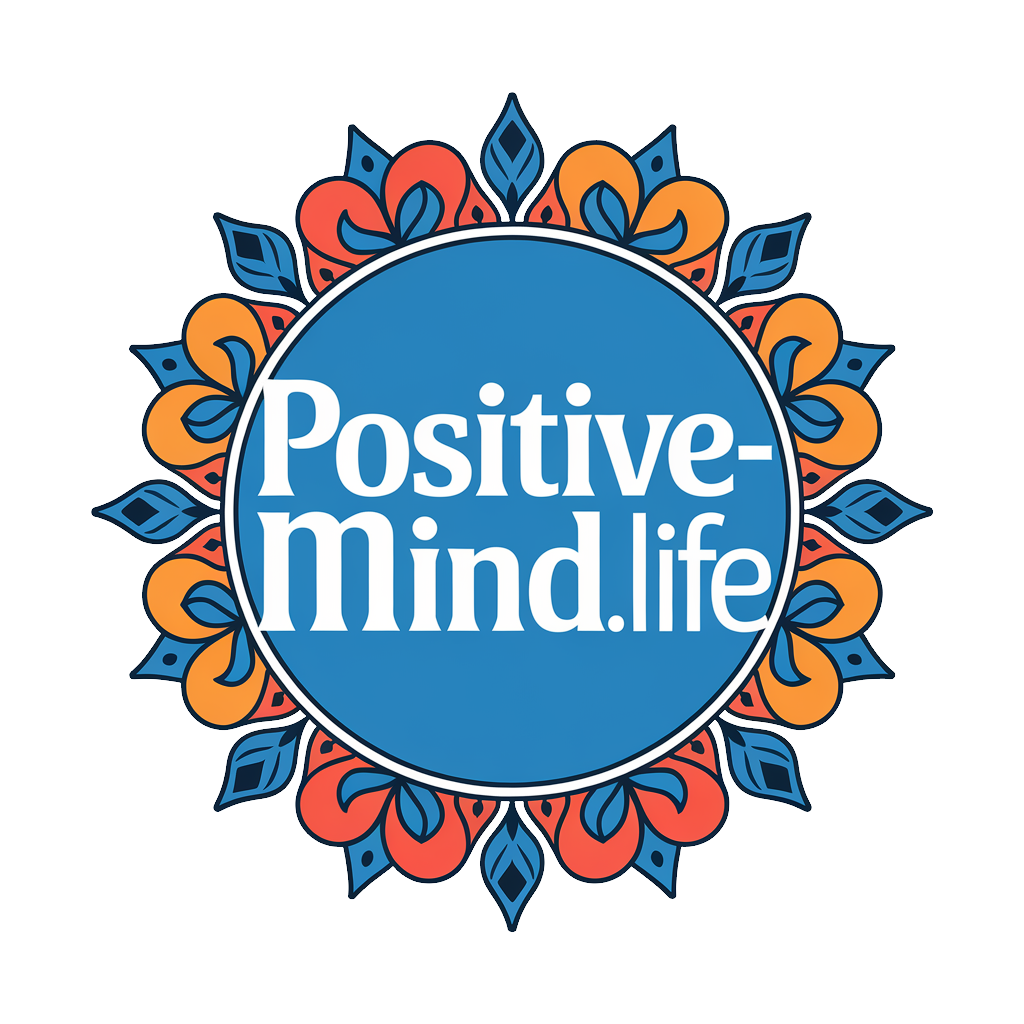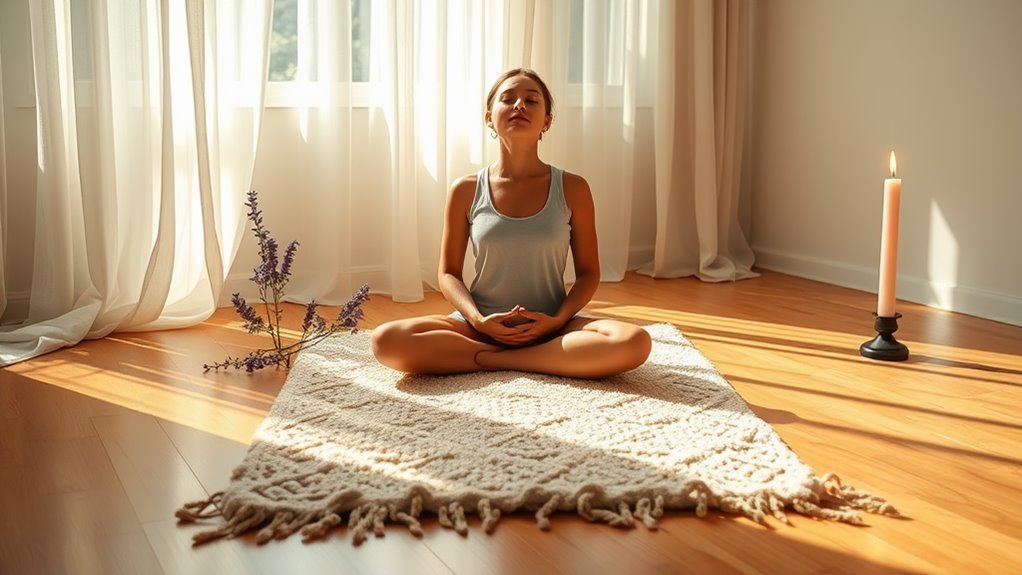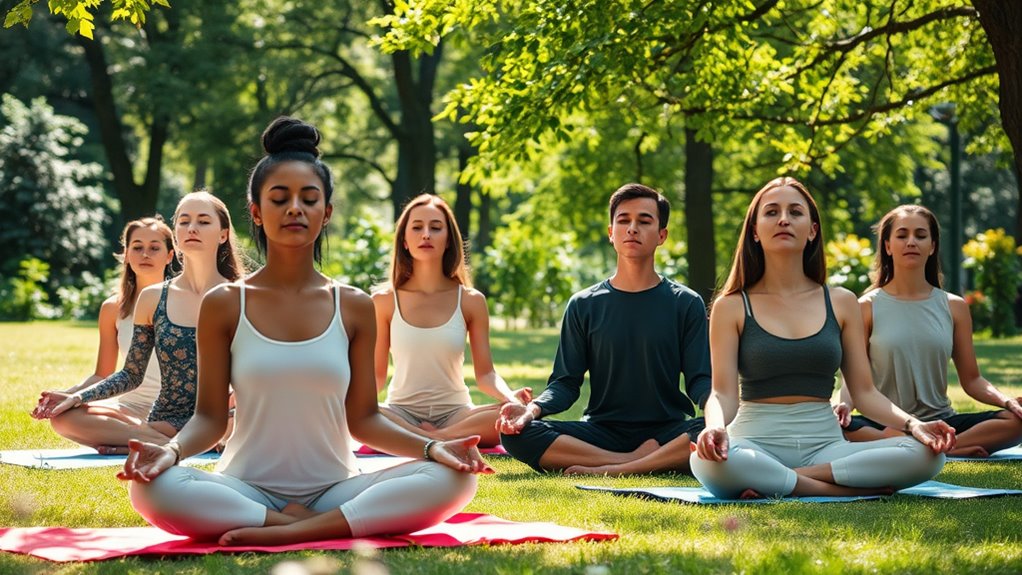Meditation for Beginners- Start With This 5-Minute Practice!
Meditation can transform your life, and you can start with just five minutes a day. Find a quiet space where you won’t be disturbed. Set a timer and take deep breaths, focusing on inhaling and exhaling slowly. Let your thoughts come and go without judgment, gently bringing your attention back to your breath whenever you become distracted. After five minutes, take a moment to reflect on how you feel. Consistency is key, so consider establishing reminders or keeping a journal to track your progress. If you keep exploring, you’ll discover even more enriching practices that enhance your journey.
Key Takeaways
- Find a quiet space to minimize distractions and create a calming environment for your meditation practice.
- Set a timer for 5 minutes to help you focus without worrying about the clock.
- Start by focusing on your breath, taking deep inhalations and slow exhalations to ground yourself.
- Gently redirect wandering thoughts back to your breath, cultivating mindful awareness throughout the session.
- Conclude your practice by reflecting on your feelings and carrying that awareness into your daily activities.
Benefits of Meditation
Exploring the benefits of meditation can open up a world of positive changes in your life. You’ll find that one of the most significant advantages is stress reduction. In today’s fast-paced world, stress can become overwhelming, but meditation offers a powerful tool to combat it. By dedicating just a few minutes each day to meditation, you’ll cultivate a sense of calm that permeates your daily routine.
Another key benefit is mental clarity. As you meditate regularly, you’ll notice your thoughts becoming sharper and more focused. This increased clarity allows you to tackle challenges with greater ease, making decisions feel less daunting. You’ll start to notice patterns in your thinking, which can lead to breakthroughs in both personal and professional realms.
Moreover, meditation enhances emotional well-being. It helps you develop resilience against negative emotions, fostering a more positive outlook on life. The practice creates a space for self-reflection, enabling you to understand your thoughts and feelings more profoundly.
Preparing for Your Practice
Preparing for your meditation practice can make a significant difference in your experience. First, create a quiet, comfortable space free from distractions. This environment sets the stage for your mindfulness awareness to blossom. Choose a spot where you can sit or lie down comfortably, allowing your body to relax fully.
Next, take a moment to focus on your breathing techniques. Start by inhaling deeply through your nose, allowing your chest and abdomen to expand. Hold for a second, then exhale slowly through your mouth. Repeat this for a few cycles to help ground yourself in the present moment.
It’s also beneficial to set an intention for your practice. Whether it’s cultivating calm, clarity, or compassion, having a clear focus can enhance your meditation experience.
Lastly, let go of any expectations. Meditation is a personal journey, and each session will feel different. Embrace whatever arises with curiosity and kindness. By preparing thoughtfully, you’re laying the groundwork for a successful practice that invites deeper mindfulness awareness and personal mastery. Remember, every moment spent preparing is a step towards a more enriching meditation experience.
Step-by-Step 5-Minute Guide
Starting your meditation practice can be as simple as dedicating just five minutes to it. Here’s a step-by-step guide to help you get started.
-
Find a Quiet Space: Choose a comfortable spot where you won’t be disturbed. Sit or lie down, ensuring your posture is relaxed yet alert.
-
Set a Timer: Use your phone or a timer to set for five minutes. This helps you focus on your practice without worrying about the clock.
-
Focus on Your Breath: Close your eyes and take a deep breath in through your nose, feeling your chest rise. Exhale slowly through your mouth. Repeat this a few times to establish your breathing techniques.
-
Cultivate Mindful Awareness: Shift your attention to your natural breath. Notice the sensations as you inhale and exhale. If your mind wanders, gently redirect it back to your breath without judgment.
-
Conclude Your Practice: When the timer goes off, take a moment to notice how you feel. Open your eyes slowly and bring this sense of mindful awareness into the rest of your day.
You’re already on the path to mastery!
Tips for Consistency
Consistency is key when it comes to building a successful meditation practice. To maintain regularity, consider setting daily reminders on your phone or using sticky notes in visible places. This nudges you to meditate at the same time each day, creating a habit that sticks.
Another effective tool is a meditation journal. Documenting your experiences, thoughts, and feelings can deepen your understanding and commitment. Reflecting on your progress motivates you to continue.
Here’s a simple table to help you visualize your commitment:
| Day | Reminder | Journal Entry |
|---|---|---|
| Monday | Morning alarm | Felt calm and focused. |
| Wednesday | Sticky note on mirror | Mind wandered often. |
| Friday | Evening meditation time | Grateful for this time. |
Expanding Your Meditation Journey
As you deepen your meditation practice, exploring new techniques and styles can enhance your experience and keep you engaged. One powerful method is incorporating mindful breathing. By focusing on your breath, you cultivate awareness and create a deeper connection with the present moment. Try to lengthen your inhales and exhales, allowing your breath to become a soothing anchor throughout your meditation.
Another enriching approach is using visualization techniques. Picture a serene landscape or a peaceful moment in your life. This mental imagery not only enhances relaxation but also helps you manifest your intentions. As you visualize, allow yourself to immerse fully in the sensations and emotions associated with your imagery.
You might also consider experimenting with guided meditations, where a teacher leads you through the process. This can provide structure and inspiration, especially if you’re feeling uncertain about your direction.
Finally, don’t hesitate to join a meditation group or class. Sharing your journey with others can introduce you to new perspectives and practices. Embrace this journey of exploration, and remember that every technique offers unique benefits, helping you cultivate a richer and more fulfilling meditation practice.
Frequently Asked Questions
Can Meditation Help With Anxiety and Stress Relief?
Meditation can significantly help with anxiety and stress relief. By practicing mindfulness techniques and incorporating breathing exercises, you’ll cultivate a sense of calm, allowing you to manage stress more effectively and enhance your overall well-being.
What Time of Day Is Best for Meditation?
The best time for meditation depends on your lifestyle. Incorporating it into your morning routine energizes you for the day, while practicing during evening calm helps you unwind and reflect, fostering a peaceful mindset.
Do I Need to Sit Cross-Legged to Meditate?
You don’t need to sit cross-legged to meditate. Instead, find a comfortable position that suits you—whether that’s in a chair or on the floor. The key is to maintain a relaxed, upright meditation posture.
Can I Meditate While Lying Down?
Meditation’s like a gentle river; you can flow with it in any position. If lying down suits your comfort level, go for it! Just ensure you stay alert and engaged to reap the benefits.
How Do I Know if I’m Meditating Correctly?
You’ll know you’re meditating correctly when you feel focused and present. Experiment with different meditation techniques and mindfulness practices, noticing your thoughts without judgment. Trust your experience; each session is a step toward mastery.




